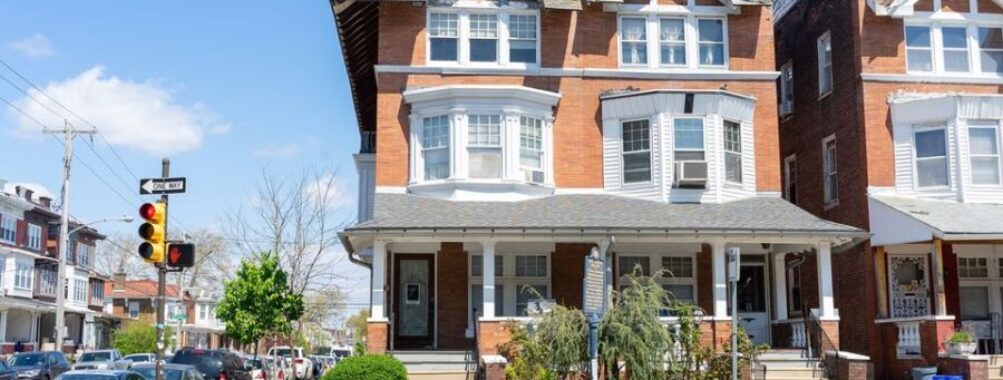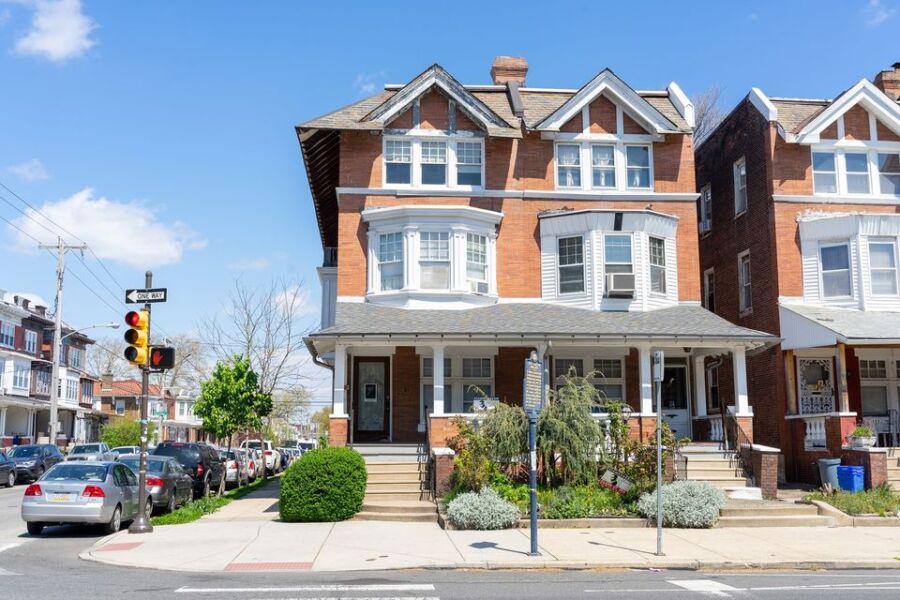
Paul Robeson House & Museum
Table of Contents
History and Significance

Photo Credit: Purnell T. Cropper
The Paul Robeson House & Museum is steeped in history and deeply intertwined with the life and legacy of Paul Robeson. Paul Robeson spent his final years in this house, making it a living museum of his incredible journey. The house captures Robeson’s legacy as an activist, artist, and intellectual who fought tirelessly for social justice. A visit here is a deep dive into America’s history, marked by Robeson’s remarkable contributions that transcended art, politics, and human rights.
4951 Walnut Street isn’t just an address; it’s a historical marker in Philadelphia. The Pennsylvania Historical and Museum Commission recognizes the residence, emphasizing its cultural importance. This house is a poignant symbol of Robeson’s enduring spirit and relentless pursuit to uplift marginalized communities. The Paul Robeson House and Museum preserves this history vividly, offering insights into Robeson’s life and the turbulent times he navigated.
Main Attractions and Activities
The Paul Robeson House & Museum offers a diverse array of attractions and activities that are truly enriching. The museum hosts carefully curated exhibits detailing Robeson’s multifaceted career, ranging from his musical achievements to activism. Visitors can see artifacts, photographs, and documents that span Robeson’s illustrious career. The gallery at 4951 Walnut Street transforms his story into a tangible experience, bringing history to life.
Guided tours are a mainstay at the Paul Robeson House, offering an immersive experience into the artist-activists world. These tours are led by knowledgeable guides who share abundant anecdotes and historical facts about Robeson’s life, his impact on West Philadelphia, and broader American society. Additionally, the museum frequently hosts cultural events, lectures, and performances that reflect the ongoing influence of Robeson’s legacy.
Visitor Experience
A visit to the Paul Robeson House & Museum is educational and inspiring. Upon entering the museum, guests are greeted with a warm, welcoming atmosphere that immediately makes them feel connected to Robeson’s legacy. The house’s interior is meticulously preserved, capturing a piece of history within its walls. As visitors walk through, they’re offered a close view of Robeson’s life, enhancing their understanding of his impact on social justice and cultural movements.
Visitors often express a profound sense of connection when touring the house. The exhibits are informative and emotionally resonant, compelling guests to reflect on the struggles and triumphs of Robeson’s life. The West Philadelphia Cultural Alliance has ensured that the Paul Robeson House remains a space where learning and appreciation for history are paramount, providing an enriching experience for all ages.
Tips for Visitors
If you’re planning a visit to the Paul Robeson House & Museum, a few tips can help make your experience even better. Firstly, it’s a good idea to check the museum’s schedule to ensure you can join one of the guided tours, which offer invaluable insights into Robeson’s life. The tours usually run at specific times and are led by expert guides who bring a wealth of knowledge about the exhibits and Robeson’s significant role in both local and national history.
When visiting, consider allocating a couple of hours to fully explore the museum and its exhibits. Comfortable walking shoes are recommended, as you’ll be moving through various rooms and possibly attending one of the engaging events held at the museum. Lastly, don’t forget to visit the museum’s gift shop, where you can find books and memorabilia related to Paul Robeson’s inspiring life and career.
Accessibility and Facilities
The Paul Robeson House & Museum is committed to ensuring a pleasant and accessible visit for everyone. The museum offers wheelchair accessibility, making exploring the exhibits easy for individuals with mobility challenges. Additionally, the staff is always ready to assist visitors with special needs to make their experience as comfortable as possible. They also provide materials and resources in various formats to cater to different accessibility requirements.
Facilities at the Paul Robeson House are designed with visitor comfort in mind. Clean restrooms are available, as are seating areas where guests can rest during their tour. The museum is also equipped with informative signage and guides to facilitate seamless navigation through the house. Furthermore, visitor-friendly policies ensure everyone feels welcome and can enjoy the rich cultural heritage preserved in this historic house.
Unique Features
What sets the Paul Robeson House & Museum apart from other historical sites in Philadelphia are its unique features and deep connection to Robeson’s life and career. One standout feature is the intimate setting of the house itself, which offers an authentic glimpse into Robeson’s personal space and daily life. The house at 4951 Walnut St stands unchanged in many ways, providing a genuine sense of walking through history.
Another compelling aspect is the museum’s ongoing commitment to educational and cultural programming. The West Philadelphia Cultural Alliance and other partners like the University of Pennsylvania’s Sachs Program continuously support creative grants and initiatives that keep Robeson’s legacy vibrant. Special exhibitions and programs, such as those funded by the Museum and the Sachs Program, delve deep into Robeson’s multifaceted identity, from his music and acting to his activism and academic achievements. These unique events highlight the dynamic and multifarious legacy Robeson left behind.
Overall Impressions
Overall, the Paul Robeson House & Museum offers an impactful and insightful experience for all who visit. The dedication to preserving Paul Robeson’s legacy is evident in every room and exhibit, drawing visitors into a powerful narrative of resilience, talent, and activism. The museum successfully bridges the past and present, making history relevant and engaging for today’s audience. It stands as a testament to Robeson’s enduring influence and his profound impact on American culture and social justice movements.
Visitors often leave the Paul Robeson House & Museum with a deeper appreciation for Robeson’s contributions and a renewed sense of inspiration. The combination of well-preserved historical artifacts, engaging storytelling, and community-driven events ensures that everyone can take something meaningful away from their visit. It’s a must-see destination for anyone interested in the rich tapestry of American history and the ongoing story of social activism.
Pros and Cons
There are numerous pros to visiting the Paul Robeson House & Museum. One major advantage is its rich educational experience, providing deep insights into Robeson’s life and work. The museum’s exhibits are meticulously curated, and the guided tours are incredibly informative. Another pro is the sense of community and cultural enrichment visitors feel, thanks to events and exhibits supported by organizations like the West Philadelphia Cultural Alliance and the Council.
However, there are a few cons as well. The museum’s limited space sometimes makes it feel crowded, especially during popular events or peak visiting times. Additionally, while efforts are made to ensure accessibility, some visitors with specific needs might find certain areas challenging to navigate. Despite these minor drawbacks, the museum’s overall impact and the depth of its offerings far outweigh any inconveniences, making it a cherished site in Philadelphia’s cultural landscape.
Location
Places to Stay Near Paul Robeson House & Museum
Find and Book a Tour
Explore More Travel Guides
No reviews found! Be the first to review!